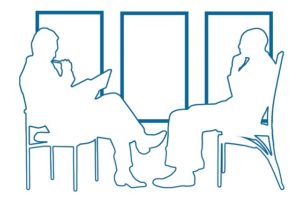When it comes to your interview for a US medical residency program, it’s important to be prepared. Not only do you want to have a good idea of what to expect in terms of the interview day schedule–as we discussed in the previous post–but it can also be helpful to know what might be coming when you go into the formal interviews themselves. Although the specific interview questions can vary between programs (and between individual interviewers within a single program), there are certain questions that you’re probably going to be asked. Read on for a list of the most common questions and some ideas on how you might approach them in your US medical residency interview.
Common Interview Questions for Foreign Medical Graduates
As a foreign medical graduate, here are a few of the US medical residency interview questions that you are most likely to be asked:
- Can you tell me a little bit about yourself?
This is the standard opening question for a US medical residency interview, and it can help set the stage for your whole conversation. When you’re responding, your goal is to be informative, but succinct. You should provide a brief personal and educational background (where you grew up and went to medical school), as well as a short description of how you got interested in medicine, but you don’t need to go into too much detail. After, all, you don’t want to start giving answers to questions that might be asked later in the interview and end up repeating yourself.
- Why do you want to do your medical residency in the United States?
This is a question that only foreign medical graduates get asked, and your answer can help you stand out from the other candidates. Your interviewer will probably be genuinely interested in what brought you to this decision, so you should be ready for it.When faced with this question, it is important to be honest because there is no “right” answer. The most important thing is to offer a thoughtful, well-reasoned response that tells the interviewer a little more about you and your goals. If possible, try to tell an illustrative story that highlights the factors that played into your decision. .
- What do you envision yourself doing after completing your residency?
As you answer this question, it is especially important to remember to avoid a “canned” response: make sure you aren’t just listing the professional goals from your personal statement. The interview gives you the opportunity to expand on what you wrote and offer a more personal perspective. Whether you dream of advancing your career in the United States or hope to eventually return to the country where you completed medical school (or another country altogether), you want to show your interviewer that you have clear goals and a high level of motivation to achieve them.
- Why are you interested in this particular specialty area?
With this question, you have two objectives: to show that you are well-informed about your chosen specialty area and to demonstrate your genuine passion for the field. It offers an excellent opportunity to expand on some of the specialty-related experiences that you listed on your CV, such as student electives and graduate externships. In the interview, you have the chance to explain to your interviewer how meaningful these experiences were to you personally and how they shaped your professional goals for the future.
- What is your favorite book/movie/TV show?
When you get a question like this, you might feel pressured to reference an American show that you think your interviewer has heard of–and if that’s the truth, no problem. However, if you love an obscure TV show that only airs in your home country, don’t be afraid to talk about it! With these types of questions, interviewers are looking to hear about your interests outside of your academic and professional life, so your sincerity is more important than the specific book/movie/TV show you choose. Plus, your interest in foreign media could help demonstrate a way in which you could contribute diversity to the program!
Getting Ready for Your Interview
As you prepare for your interview, you may want to do a trial-run with a friend or colleague, and they can ask you some of the questions listed above. However, as you practice, you want to make sure that your answers don’t sound scripted. Even if you’re expecting one of these common questions, you still want your real interview to be a conversation, not a performance. This is especially important for foreign medical graduates from non-English-speaking countries, since interviewers may be evaluating your language skills, and you don’t want your interviewer to think you simply memorized a well-written speech. Therefore, remember to engage with your interviewer and be genuine with your responses–don’t just recite what you planned out in advance.
FMG Portal is here to help foreign medical graduates at every step of the US medical residency application and preparation process. Contact us today for more information!








